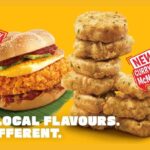Segmentation has been used extensively in marketing to yield better results. Regardless of how we try and look at it, the fact of the matter is that social media is a platform that’s here to stay and has already been embedded into our daily lives.
However, different people use social media differently and that can be further broken down into their age group, gender, geographical location, employment status, how much money they make and so on. This act of breaking things down into groups and classes is essentially what social media segmentation is and it’s an integral part of internet marketing.
Social segmentation makes it easier for marketers to target a certain group of people within a specific region with a similar niche of interests to send personalized messages to, learn what their buying habits are and ensure that they are not wasting their time talking to people who are not their potential customers.
This precise targeted marketing is a vital part of online marketing and absolutely crucial to businesses that want to have a strong online presence.

Therefore, knowing which social media platforms your potential customers are on is one of the first steps in social segmentation. As an internet marketer, speaking the language of your target audience is key. You need to be where the people are and they need to know that you’re there.
With a vast array of social media platforms available at your fingertips, it would be impossible to be everywhere all at once. And while that may seem like a feasible idea, it’s probably best to start with the platform with most of your target customers.
For most businesses, that’s either going to be Facebook, Twitter or Instagram. Once you have figured out the platform, the next step is to add value and let your audience know that you exist.
From there, the next step is to break it down even further into age groups. Let’s take Facebook for example, an 8-year old kid would probably use that platform very differently from how a 40-year old working adult would.
And Facebook is a platform with nearly 3 million users, and of that number, only a fraction of a fraction are going to be your potential customers and a fraction from that will probably end up being actual paying customers.
Once you’ve broken down the age range of your audience, you might also want to break it down even further into what region they’re in, what languages they speak, what other similar businesses are they connected to, and so forth. This will help factor out the potential market for your business and help you plan out a targeted marketing strategy.
Target marketing is great for new and small businesses as it’s a well-focused type of marketing that’s both cost-effective and efficient. Upon doing a proper job at identifying your potential customers through social segmentation, target marketing is simply the natural next step of executing on the data you’ve collected.
So now, instead of having to pay a huge sum of money to run ads that will be viewed by everyone with little to no ROI, you’d only be paying about half of that amount to run ads that will only be viewed by a very specific niche of people that you’ve identified who are very likely to buy your product or service.

One of the most famous and successful case studies of target marketing is none other than the fast food chain giant, McDonald’s. With early beginnings of being a place aimed almost exclusively at children and teenagers – featuring large playlands, birthday parties and Happy Meals that came with toys, McDonald’s was relentless at targeting a very specific demographic and absolutely ruling it.
However as the years went by and the millennials became America’s largest generation in the workforce, came a more health conscious society that weren’t fans of the deep fried fast food anymore. McDonald’s took notice of this and acted swiftly, offering more healthier menu options and adapting to the demands of the current times.
Its initial target marketing strategy however, has remained somewhat unchanged, with its only major difference being that instead of kids and teens, today’s McDonald’s is aimed at the millennials, with a more modern upscale design in all its outlets and also offering fresh coffee products and cakes. It is, in fact, one of the best case studies of a very successful target marketing strategy.















